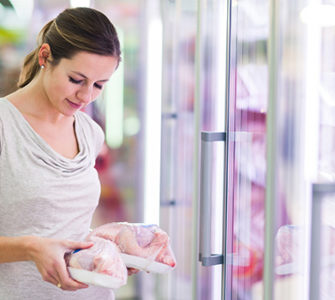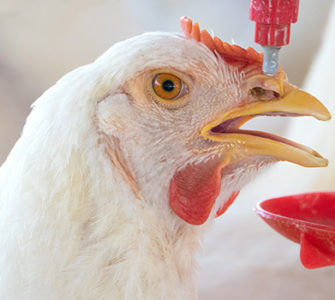Hatchery tips for successful transition to NAE production
Preventing birds from getting sick is perhaps the biggest challenge encountered when transitioning from conventional to “no antibiotics ever” (NAE) production, Tony Newsome, division manager, Fieldale Farms, told Poultry Health Today.
Fieldale Farms was one of the first poultry companies to transition to NAE production. It’s been a long process, Newsome said, but the company has figured out how to raise healthy NAE flocks.
“We basically started from the ground up,” first with pullets and breeders, he said.
When no antibiotics are used, essentials such as biosecurity and bacterial loads play a far greater role. Eggs going into the hatchery have to be clean, the hatchery has to be kept clean and chicks sent to the grower house have to be clean, Newsome emphasized.
“I don’t think there’s any great secret to how to run a hatchery and what needs to be done. I think the problem is all of us get caught up in lack of help, or whatever the case may be, and we let things go that we really know need to be done every day. So to run antibiotic-free, you can’t let them go…” he said.
In ovo vaccination without gentamicin, for instance, requires that hatchery surfaces are as clean as possible. Swabbing to check for bacteria is done frequently. “I think as long as [everything is] clean and everything is done by the book, you can get by without gentamicin. We’ve done it now probably 15 years with really good success,” he said.
Optimal immunity
Newsome said optimal immunity is likewise important when raising NAE flocks, and that includes maintaining vaccination against Marek’s disease. Companies that quit vaccinating may suddenly wake up one day to find they’re “in the worst trouble you’ve ever been in” due to condemnations. It can take 6 to 8 weeks to remedy the situation.
“I don’t want to be without vaccinating for Marek’s for any length of time. We grow a premium product, and we don’t want to take a chance with something like that interfering with the flow,” he said.
The vaccination plan in general will vary depending on the location, “but we try our best to vaccinate for everything that we can to try to keep from compromising the immune system,” Newsome continued. For infectious bronchitis, Newsome added that Fieldale uses a multitude of segregated vaccines instead of a combined vaccine, and the condemnation rates are about as good as anybody’s in the industry.
Another important step to take with NAE flocks includes attention to litter. “The big one that we fight every day is trying to keep houses as dry as we can, because that moisture obviously just aids the bacterial load that much more,” he said, and noted that Fieldale uses a lot of litter amendments.
Ensuring food safety, particularly containment of Salmonella, also requires sanitation such as good rodent control in breeder and broiler houses. The nutritionist is always looking for ways to keep the level of Salmonella down in the feed supply, Newsome said. He added that Fieldale pelletizes everything including the breeders’ feed to help knock down Salmonella levels in the hen flocks before they produce.
Posted on September 16, 2021

















